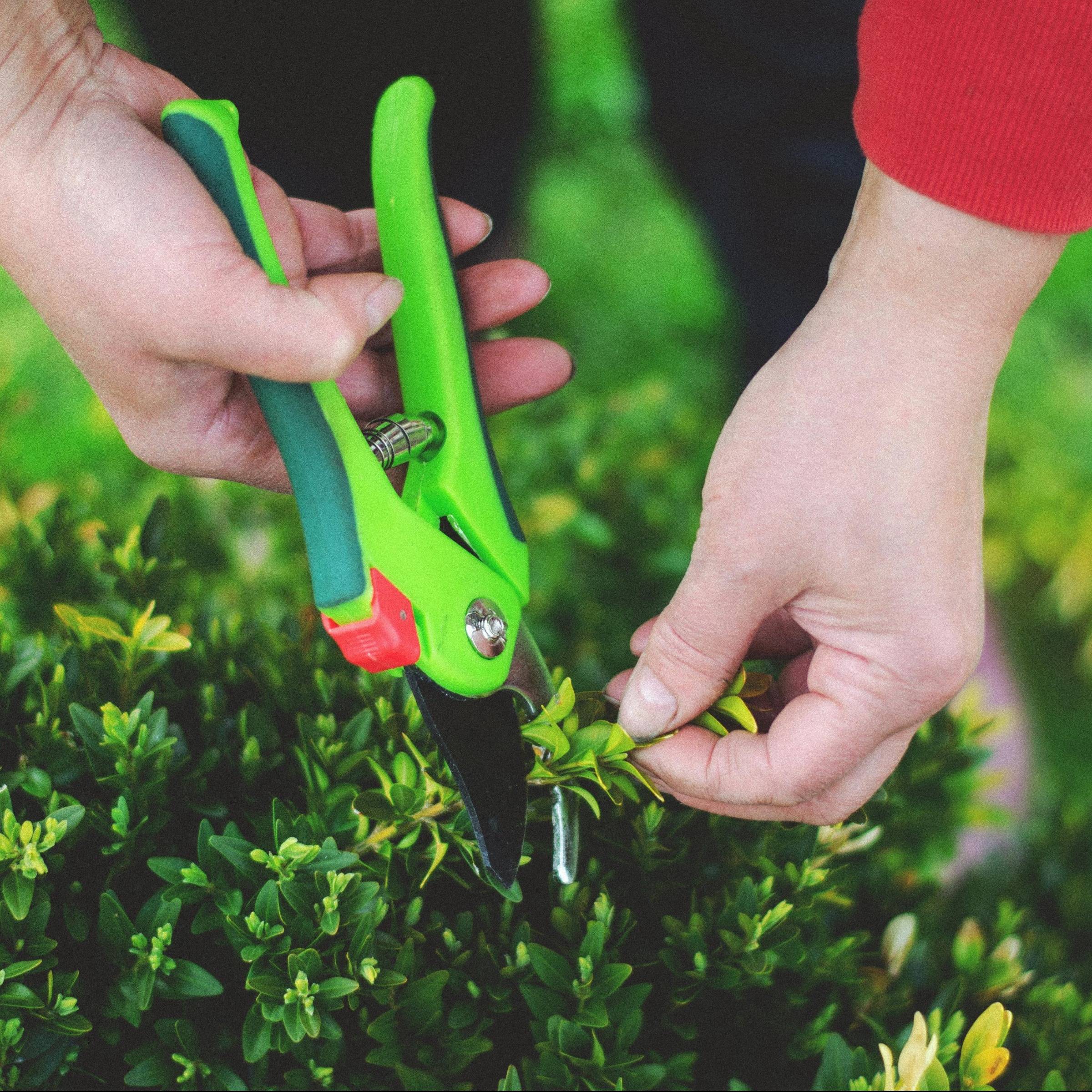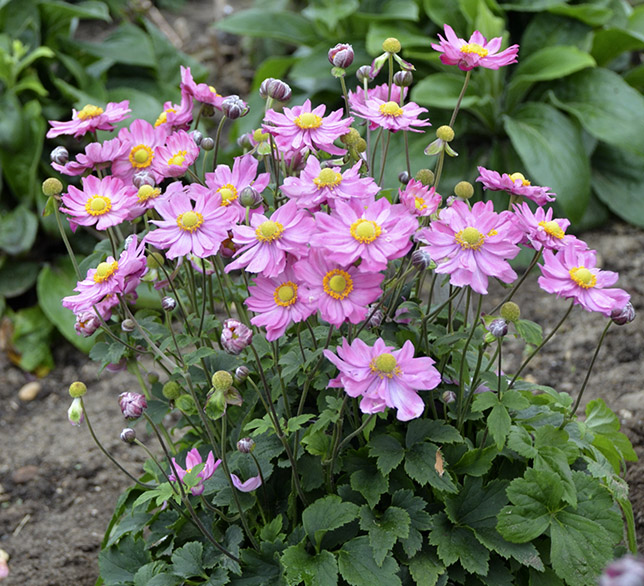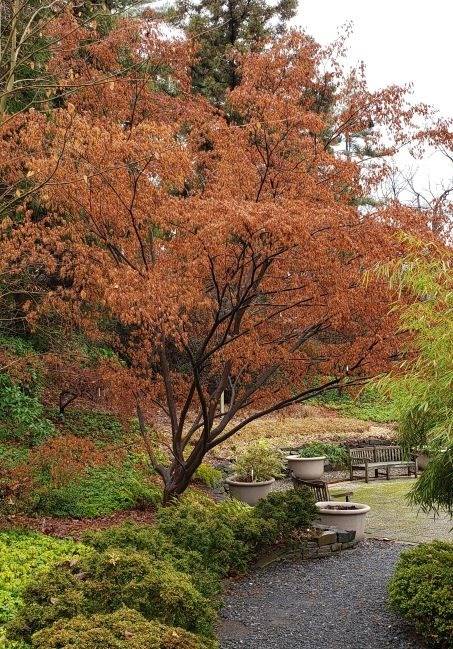Why Fall Pruning Can Harm your Shrubs

Reasons why pruning shrubs in fall is not a good idea:
- Pruning stimulates new growth, which is stressful for a plant when it’s trying to achieve dormancy.
- Pruning cuts don't heal as quickly in fall.
- Late season new growth is soft and easily damaged by frost.
- Diseases are more likely to be spread by pruning in fall rather than late winter.
- Plants that bloom in early spring (most azaleas, many hydrangeas, lilacs, rhododendrons, camellias, for example) form their buds the previous year, so fall pruning removes them.

Best Time to Prune Shrubs:
- Dead, diseased, or damaged parts may be pruned at any time—for the health of the plant, and possibly the safety of you and your home.
- Most deciduous shrubs and trees should be pruned in late winter or early spring, when in full dormancy. Visually, it is easier to prune deciduous types when the branch structure is not hidden by the leaves.
- Early spring bloomers should be pruned within a month or two of cessation of flowering. These bloom on "old wood", on buds formed the previous fall.
- Summer bloomers (roses, non-reblooming hydrangea varieties, crape myrtle, rose-of -sharon, butterfly bush) may be pruned in late winter or early spring before or just as new growth begins. These bloom on buds formed on the new season's growth ("new wood").
- Non-flowering broadleaf evergreens (hollies, euonymous, boxwood, privet, etc.): early spring, and again early to mid-summer for more vigorous varieties.
- Conifers: The goal here should be to plant specimens that will not outgrow your space, as very few are tolerant of indiscriminate pruning. For many, cutting back into old wood will leave permanent bare stubs.
- Shrubs that bloom on old AND new wood are best pruned right after the first blooming period in spring has finished. They can be pruned when dormant, but the early season blooms will be sacrificed. Waiting too long between cycles may sacrifice the later blooms, depending on how long the growing season is in your zone. This includes many newer hydrangea varieties and Type II clematis.
- Don't know what you have? If you don't know what type of flowering shrub you have, pruning right after flowering ceases is safest.
- Pruning should be completed by 6 to 8 weeks before your first frost is expected in fall, to give any new growth time to harden off.
Do you know why you're pruning?
Unless you're training plants for a particular purpose, such as a formal hedge, espalier, or topiary, or growing fruiting crops, there is often little need to prune. The main reason homeowners end up needing to trim shrubs is due to improper siting from the start. After several years, the plants become too close to the house or to each other, overflow into pathways and over sidewalks, or reach a height that blocks windows or other views. Needless to say, the mature size of a plant must always be taken into consideration when designing a garden, but it's an aspect far too frequently overlooked. Other than reducing the size of an overgrown plant, these are the main reasons to prune:
- Removing dead, diseased, or broken branches to improve the health of the plant.
- Removing dead flowers and seed pods to encourage better flowering, e.g. lilacs, rhododendrons, tea roses
- To produce a bushier plant by encouraging new shoots from the base: some young plants can be cut almost to the ground, e.g. butterfly bush, kerria, red-twig dogwood, privet, lilacs, smooth hydrangeas, forsythia, and taller growing spiraeas (S. bumalda, S. vanhouttei).
- To create special shapes or forms such as formal hedges, topiary, or espalier
- Thinning to allow light and air to penetrate or to expose interesting branch structure: usually fruiting plants, plants susceptible to disease like roses, japanese maples and other specimen trees
- To offset root loss when transplanting
- To rejuvenate struggling plants: severe pruning may encourage new growth on plants that are declining
Another term you will hear is "old wood." This can refer to simply last year's growth that has wintered over, as with plants like azaleas that flower on "old wood," and do not produce flowers on new growth during the same season. Plants that bloom on old wood are generally spring bloomers only. When speaking of pruning, however, "old wood" more often refers to the parts of the plants closer to the base or large, older branches. Some plants will not regenerate when cut into old wood, such as lavender and many conifers. Cutting these plants back too far will leave bare stubs that will not regrow, as with the juniper in the photo at the beginning of this article. A good rule of thumb is to never cut back below where live leaf buds can be seen, unless you know for sure that your plant can tolerate that.
Shearing is indescriminately removing much or all of the new growth each year to create an unnatural shape--which should be reserved for hedges and topiary that have been trained to accept this. Sadly, this is what landscapers seem to think is proper "pruning," and every shrub in the landscape ends up flattened with power trimmers whether it needs it or not. Frequent "pruning" in this fashion leaves a plant with a thick, congested layer of foliage on the outside surrounding bare stems on the inside. The constant flat-topping of these plants gives them an upside-down triangular shape, wide at the top and narrow at the base, as the pruning prompts all the new growth to the top which then shades the bottom. Take a ride through any community (especially those with an HOA since the same hired crew does the entire neighborhood) and count how many of these accidental topsy-turvy plant pyramids you can find--trust me, they're everywhere.
Heading back is the process of shortening individual branches to shape a plant and control size. The direction of growth can be somewhat controlled by pruning to a bud facing in the desired direction (most commonly an outward or upward facing bud). Care should be taken to preserve the natural habit of the plant, as heavy-handed pruning can result in a conspicuously unnatural form. Arching plants like most forsythia and varieties of beautyberry, beautybush, butterfly bush, ninebark, bush honeysuckle, viburnum and others do not look their best when forced into heavily pruned shapes. Again, this often happens when these plants outgrow their allotted space and out come the power shears!
Thinning removes individual branches, either where they meet the parent stem or at the base, allowing air and light to reach the center. Thinning to a parent stem is often done with hybrid tea roses to reduce the possibility of disease and to promote better flowering. It can also gently control the size of a shrub without prompting excessive new growth, resulting in a more attractive, healthier plant. Ground-level thinning is a good method of improving fruiting and flowering of plants that produce multiple shoots from the base, such as blueberries, hydrangeas, beautyberry, red-twig dogwood, pussy willows, and shrub-form grown ninebark and winterberry, for example. Removing one third of the oldest stems at ground level each year is a good general rule. A combination of these is the best way to shorten nandina, mahonia, and similar-growing shrubs if that becomes necessary, as topping results in bare stems at the base. The tallest stem(s) can be cut out entirely, and others can be shortened at various heights to keep the plant looking full.
Renewal pruning is used to rejuvenate old, overgrown shrubs--all the stems are cut down to 6 to 18 inches tall in late winter. As it can be a discouraging sight, it can be carried out over a period of 3 or more years if preferred, rather than all at once. Prune some of the oldest branches each year until all the original stems have been reduced. This should not be done with very slow-growing species like boxwood, or plants like juniper and arborvitae which will not grow back from bare wood.
Topping repeatedly results in a dense layer of growth at the top and reduced growth at the base, an unhealthy situation.
Proper pruning cuts do not leave stubs, as shown in third photo above. Cuts should be made 1/4 inch above a bud, downward slanted at 45 degrees (top of the cut points toward the bud). Pruners must be sharp and clean! Poor pruning cuts can be entry points for disease and insects.
For more info, see our winter pruning article.











